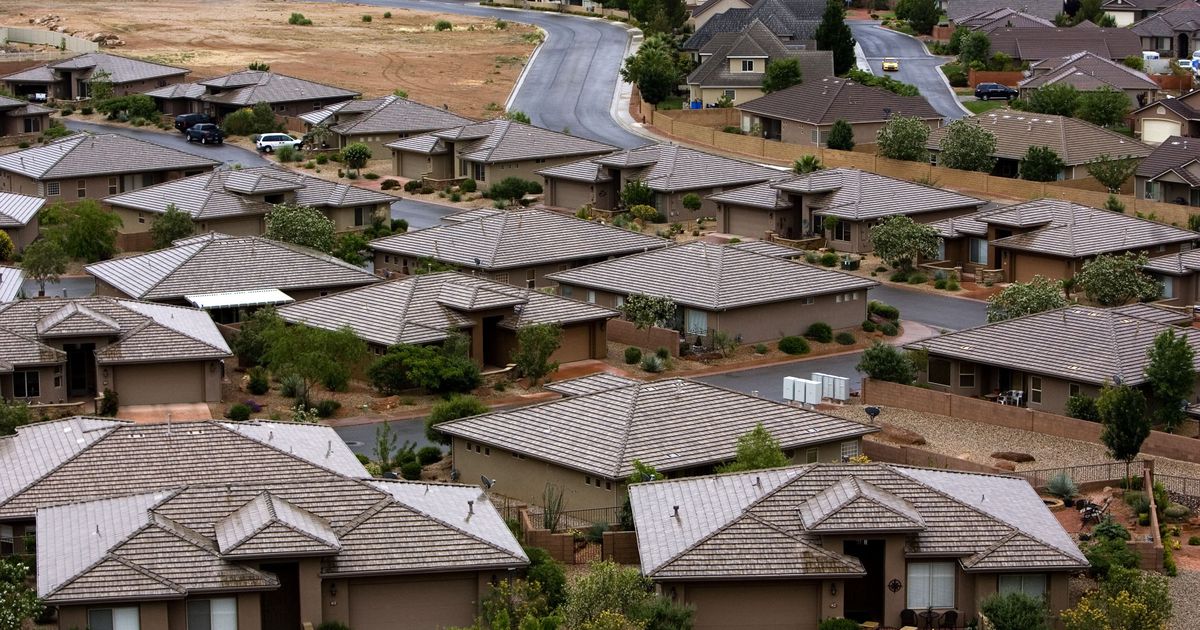Editor’s note • The following is an excerpt from the Salt Lake Tribune’s new Open Lands newsletter, a twice-a-month newsletter about Utah’s land, water and air from the environment team. For a sneak peek at what we’re working on and news we’re following, sign up to have Open Lands delivered to your inbox.
Greetings from southern Utah. This is Mark Eddington, southwest reporter for The Tribune.
With the hot summer months fast approaching, Washington County Water Conservancy District officials are busy touting the strides the county has made in water conservation.
Washington County’s population is projected to more than double to about 450,000 over the next 30 years, which prompted the district to unveil a 20-year master plan last July that calls for securing another 47,000 acre-feet of water by 2042 to keep pace with growth.
[Subscribe to the Open Lands newsletter]
Water conservation, district officials say, is the low-hanging fruit that will help the county and its residents meet that goal. It is easier to do, musters less opposition, and is infinitely cheaper than building new reservoirs or water infrastructure.
“Conservation does not require additional infrastructure so it’s an economical way for us to extend our water resources,” said Doug Bennett, conservation manager for the district.
St. George-area water officials say they are already off to a good start. The district has implemented stringent water conservation requirements for new developments and worked with its member cities to use less water.
For example, Washington County is the first county in Utah to prohibit non-functional grass in commercial, institutional and industrial developments; require weather-based irrigation controllers; and mandate golf course water budgets.
In addition, the district has passed a monthly water use surcharge, which levies a $10 penalty per 1,000 gallons of excess water use on new home and water connections that exceed 8,000 gallons during winter months, 15,000 gallons during fall and spring months and 20,000 gallons during the summer.
Moreover, district officials credit the grass-replacement program they launched in December 2022 for the removal of 1.3 million square feet of grass — just under 30 acres – which they say has saved an estimated 58 million gallons of water annually.
So how well is Washington County doing with respect to water conservation? The numbers over the past five years – from 2018 through 2022, the latest data available – indicate there has been some progress. In 2022, district customers (95% of the county’s population) consumed 39,711 acre-feet of water compared to 37,896 acre-feet in 2018. That equates to a 4.8% increase.
But since the county’s population increased by 21% over the same time period, the actual per capita water use rate has dropped from 177 gallons per day to 153 gallons per day, according to the district.
Those Gallons Per Capita Per Day (GPCD) rates are radically different (read: lower) than calculations from just a few years ago. In 2000, Washington County’s per capita water use rate was 439 gallons per day. Two decades later, the county’s per capita water use rate dropped to 285 gallons per day, according to Utah’s Open Water Data Portal.
While that was a marked decrease, the county’s water usage was still one of the highest in the nation, which resulted in a raft of bad publicity from the CBS news magazine show “60 Minutes,” among others. In response, district officials countered that its numbers were artificially high and misleading because Utah measured water differently than many of its counterparts.
“We count every application of water,” district spokesperson Karry Rathje said in 2022. “Whereas, some neighboring water providers only report consumptive water use … If we treat sewer water and use it for irrigation, that water is actually counted twice.”
That changed with the Legislature’s passage of SB119 a year ago. The district now uses the same consumption water use measuring standard employed by many other states, which only counts the amount of water a home receives that is actually used and subtracts the amount of unconsumed water that is returned to the system. Thus, Washington County’s water usage now appears much lower.
As a result of the legislation, which also eliminated the use of secondary water estimates and required metered data, district officials say they lack the data to compare water usage now to that from a decade or two ago. Further complicating long-term measurements, Rathje told The Salt Lake Tribune, the Utah Division of Water Resources has made changes to its measuring methodology.
Whatever measurement system is employed, Bennett said at a recent climate change event at Utah Tech University, much more remains to be done. He noted, for instance, that some homes in the county use 800,000 gallons of water annually, eight times as much water as many similar-sized homes.
“Are we done conserving?” he asked. “No, we all can do a better job of conservation. But we are heading in the right direction.”
function onSignUp() { const token = grecaptcha.getResponse(); if (!token) { alert("Please verify the reCAPTCHA!"); } else { axios .post( "https://8c0ug47jei.execute-api.us-east-1.amazonaws.com/dev/newsletter/checkCaptcha", { token, env: "PROD", } ) .then(({ data: { message } }) => { console.log(message); if (message === "Human

























